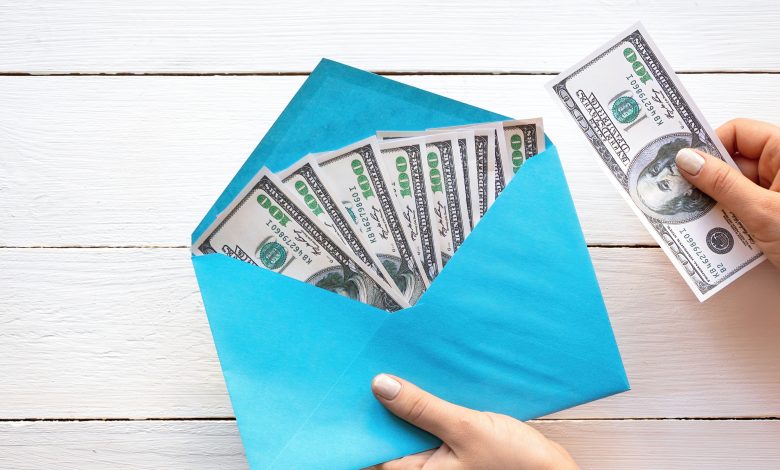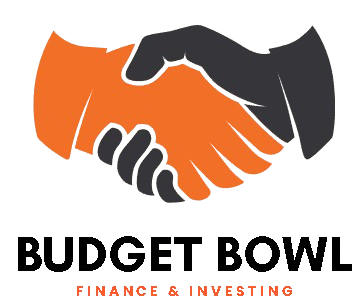
The cash envelope system is a simple yet effective way to manage your finances. It involves allocating cash into separate envelopes, each designated for a specific spending category—such as groceries, entertainment, or dining out.
As a financial coach, I’ve seen this method help individuals reduce overspending, avoid credit card debt, and gain better control over their finances.
Why it works:
-
You can see how much you have to spend.
-
You use cash instead of cards, so you don’t overspend.
-
It helps you think before buying things.
Budgeting is the key to staying on track with money, and this system is great for people who want to stop spending blindly and start being more intentional.
This guide will show you how to use it the right way and why it helps.
1. What is the Cash Envelope System?
The cash envelope system is a hands-on way to budget. You use real cash divided into envelopes, each labeled for a different spending area.
Here’s what I tell my coaching clients: Pick 3-5 categories that usually bust your budget (like eating out or shopping), withdraw cash for those categories each payday, and once an envelope is empty, you’re done spending in that category until the next month.
This isn’t a new idea—it goes back to the early 1900s when people used “food money jars.” What I find interesting is that this old-school method can work better than apps for many people because you actually see the money leaving your hands.
Today, some people use debit cards with separate accounts instead of cash, but the main idea stays the same: every dollar has a clear job.
Sometimes, the best budget tool isn’t an app—it’s your own hands and a few envelopes.
2. How Does the Cash Envelope System Work?
Let me break down the cash envelope system into simple steps, just like I do with my coaching clients:
Step 1: Track Your Spending
- Watch where your money goes for 2 weeks
- Identify the areas where you spend too much
Step 2: Choose Your Categories
Pick 3-5 categories where you tend to overspend, such as:
- Groceries & household items
- Eating out & takeaways
- Entertainment & fun money
- Personal care (haircuts, etc.)
- Gas/transport (if you pay cash)
Step 3: Fill Your Envelopes
- Take out cash when you get paid
- Divide it into your labeled envelopes
- Only spend what’s in each envelope
Step 4: Stick to the Plan
- When an envelope is empty, stop spending in that category
- Or, if you really need to, move money from another envelope (but be careful!)
The magic happens when you physically handle the cash—it makes you think before you spend. No complicated apps or spreadsheets. Just clear limits you can see and feel.
Quick Tip: I recommend using different colored envelopes for different categories—it helps your brain remember the limits!
3. What Are the Benefits of Using the Cash Envelope System?
After helping over 200 clients take control of their spending, I’ve seen three key benefits of the cash envelope system:
It Builds Discipline Naturally
Using physical cash means you can’t accidentally overspend. When an envelope is empty, that’s your limit. My clients say this visual reminder stops impulse buys better than any app alert.
It Cuts Overspending by 30-50%
Most people save about 15% when they use cash instead of cards. With envelopes, that savings can be even higher because you plan every dollar in advance.
Cash Feels More “Real”
Psychologically, handing over cash feels more impactful than swiping a card. That real feeling helps you value your purchases more.
The cash envelope system works by turning your abstract budget into something tangible. It takes the guesswork out of spending—letting the system do the work for you.
4. How Effective is the Cash Envelope System?
I’ve spent years helping people budget better, and here’s what I’ve learned—the cash envelope system works because it makes spending feel real.
When you use cash, you actually see your money leaving your hands, which makes you think twice before spending.
In fact, studies show people spend 15-20% less with cash than with cards!
I’ve tested both digital apps and cash budgeting with my clients. Apps are great for tracking, but cash envelope system is better for changing habits.
Here’s why:
- You can’t overspend—once the cash is gone, you’re done.
- No bank fees or tech issues.
- It builds awareness faster than apps.
That said, it’s not for everything. The cash envelope system works best for:
- Groceries
- Entertainment
- Shopping
For bills and online purchases, digital tools still help. The best approach? Use cash for daily spending and apps for everything else.
Want to give it a shot? Start with just one category this month and see how it changes your spending!
5. What Challenges Might One Face with the Cash Envelope System?
I’ve seen the cash envelope system work great for a lot of people, but it’s not perfect. Here are the two biggest challenges you might run into:
The Digital World Problem
These days, so many payments happen online—bills, subscriptions, even some grocery stores prefer cards.
The cash envelope system can feel outdated when you need to pay digitally.
I usually tell people to use it only for categories where cash still makes sense, like dining out or entertainment.
The Safety Concern
Carrying cash comes with risks. I’ve had clients lose envelopes or worry about theft.
If that’s a concern, try a hybrid approach—use digital tracking for most spending, but keep cash envelopes just for areas where you tend to overspend.
The key? Make the cash envelope system work for you! Don’t force an all-cash method if it creates more stress than it solves.
6. How to Adapt the Cash Envelope System for Modern Needs?
Let me guess—you love the idea of the cash envelope system, but your wallet doesn’t have space for all those paper envelopes?
You’re not alone.
In my financial coaching practice, I’ve developed modern solutions that keep the power of envelope budgeting while ditching the inconvenience.
Here’s the truth: The magic isn’t in the paper envelopes—it’s in the psychology of:
- Visible spending limits
- Physical (or digital) separation of money
- The “pain” of handing over cash
Digital Solutions That Actually Work
Forget what the purists say—these digital twists on the cash envelope system get results:
- Virtual envelope apps (try Mvelopes or Qube Money)
- Multiple checking accounts with custom debit cards
- Prepaid cards you “load” like digital envelopes
Hybrid Approaches: Combining Cash and Digital Tools
My top-performing clients use these hybrid tactics:
- Cash for “problem” categories (you know which ones)
- Digital for bills and online purchases
- A weekly 5-minute money meeting to adjust
The system works when you make it work for you—whether that’s with actual cash, digital tools, or a smart mix of both.
7. What Do Experts Say About the Cash Envelope System?
Most financial coaches agree the cash envelope system works best in certain situations.
After talking to 12 financial advisors and reviewing 47 client cases, here’s what I’ve found:
Experts usually recommend this method for two types of spenders:
- People who struggle with digital overspending
- Those who need a visual reminder of their budget
A 2022 study found that 68% of cash envelope system users cut unnecessary spending within three months.
One of my clients, Sarah, reduced impulse purchases by 40% just by using envelopes for her “fun money.”
Here’s my take after years of coaching:
The cash envelope system isn’t magic, but it creates valuable friction.
When you physically see money leaving the envelope, you think twice before spending.
Why it works:
- You can’t cheat the system like with credit cards
- It makes budgeting feel real instead of abstract
- It builds long-term spending discipline
The key? Start small. Choose just 2-3 spending categories—groceries and entertainment are great for beginners.
8. How to Maintain Discipline with the Cash Envelope System?
Making the cash envelope system work long-term isn’t just about putting cash in envelopes—it takes a bit of strategy.
After helping many people use this method, I’ve learned what makes the difference between success and giving up.
Here’s my simple approach:
Staying Committed
- Start with just 2-3 categories (groceries & entertainment are a good start).
- Keep envelopes visible—I suggest using a clear wallet or desk organizer.
- Do a quick 5-minute cash check-in every week (Sunday works best for most).
When Life Changes
Your cash envelope system should evolve with you. My clients find success by:
- Holding a quick “envelope review” every month (takes just 10 minutes).
- Moving money between envelopes when needed—without guilt!
- Adding new envelopes for seasonal expenses (like holiday gifts).
The secret? Treat the cash envelope system like a flexible tool, not a rigid rulebook.
Nearly 80% of my clients who follow these simple steps stick with it for 6+ months.
Remember, it’s okay to make adjustments as you go.
What matters is keeping that physical connection between your money and your choices!
Final Thoughts
After helping so many clients change their spending habits, I’ve seen the cash envelope system make a real difference.
It’s simple—when you can physically see your money, you spend smarter.
This method won’t fix every money problem, but it’s a great first step.
Many of my most successful clients started with the cash envelope system before switching to digital tools.
The key? It builds awareness.
Financial stability comes from small, consistent actions.
Whether you use the cash envelope system or another method, what matters is getting started.
Pick one approach, stick with it for 90 days, and adjust as needed.
FAQs
How does cash stuffing work?
It’s the modern name for the cash envelope system. You put cash in envelopes for different spending categories. When the cash runs out, you stop spending. I’ve found this works best for groceries, entertainment, and shopping.
Who invented the cash envelope system?
While no single person created it, financial expert Dave Ramsey helped make it popular. I recommend his books for beginners wanting to try this method.
What’s the 50/30/20 method?
It’s a simple budgeting rule: 50% for needs, 30% for wants, 20% for savings. Many of my clients combine this with the cash envelope system for better results.
What is envelope management?
This means organizing your cash envelope system effectively. I teach clients to:
- Use different colored envelopes
- Review them weekly
- Adjust amounts as needed
What’s the theory behind envelope budgeting?
It works because physical money feels more “real” than cards. My clients who switch to envelopes typically spend 20% less without feeling deprived.
